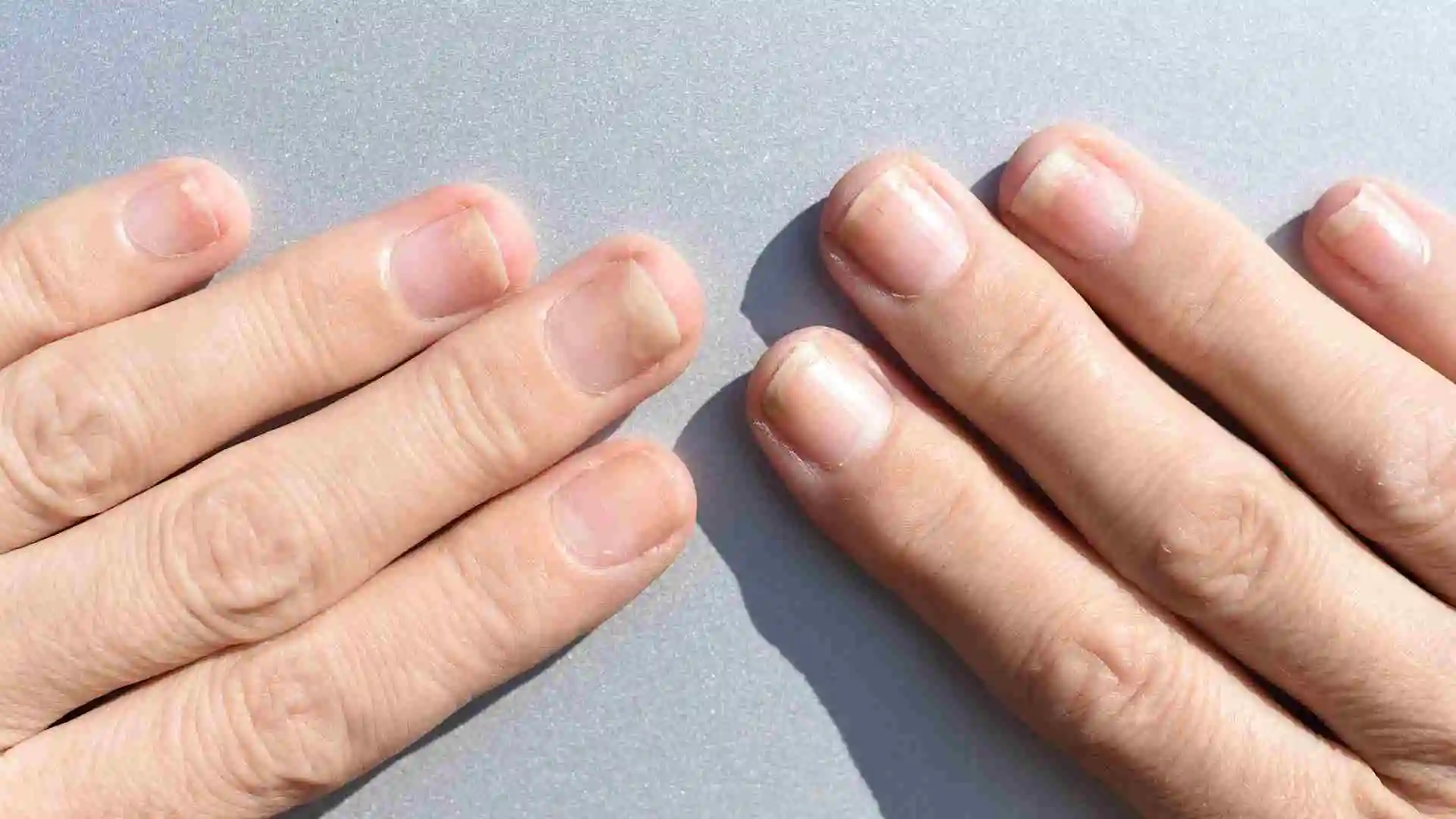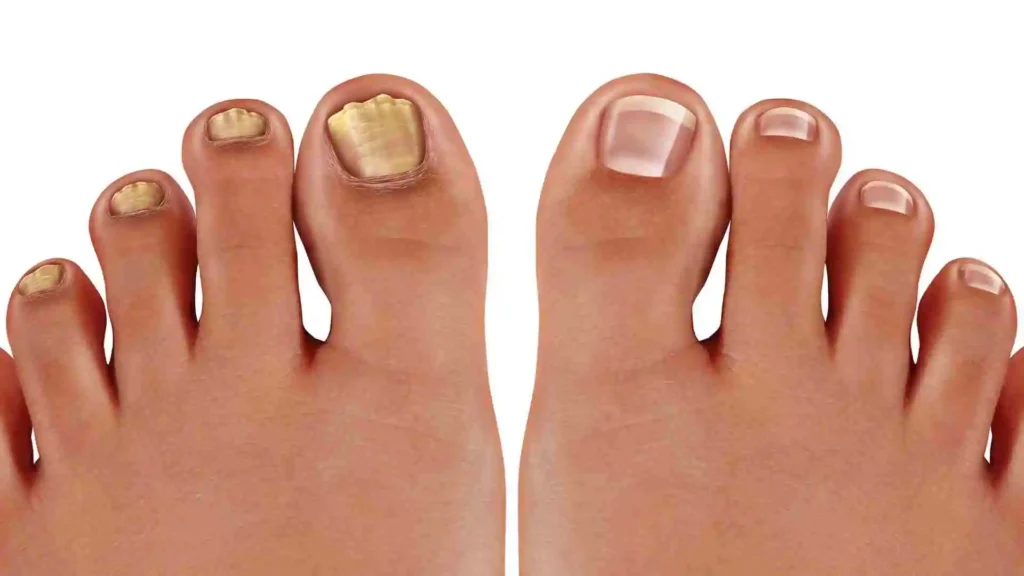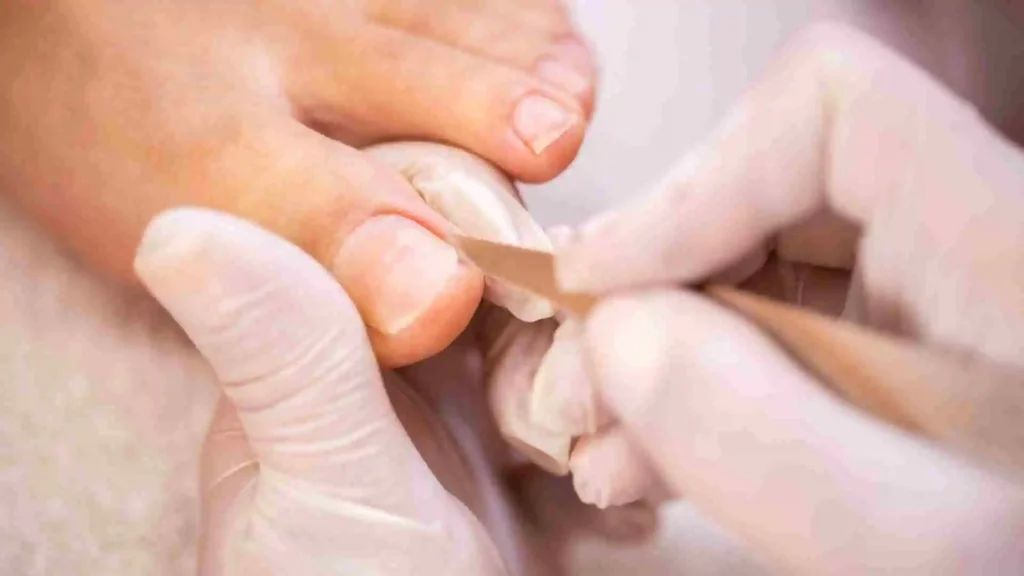Fungal Nail Infection: Causes, Symptoms, Treatments and Prevention

A fungal nail infection is not just a cosmetic problem. It’s a chronic issue for millions of people globally. Nail fungus primarily infects a person’s toenails but can infect fingernails as well. It causes the infected nails to become thick, brittle, and discoloured. This in turn causes discomfort and embarrassment.
People tend to simply ignore the toenail fungus as it continues to grow and spread. That only makes treatment more difficult. Fortunately, there are several options available for treating a fungal infection. In this article we will go over the causes, indicators, and the best fungus treatments. So that one may regain healthy nails and prevent an infection from recurring.
Understanding fungal nail applications
What is a fungal nail infection?
Onychomycosis occurs when fungus penetrates the nail bed. It results in colour, thickness, and texture changes. Foot fungal infections are particularly common. It is because toes remain in a warm, moist environment in shoes. Fingernail fungus is less common than toe nail fungus. However, it can stem from excessive moisture, trauma, or chemical exposure.
How do fungal infections develop?
Fungi thrive in wet, confined environments. Usually, the process starts with a small white or yellow blemish under the nail that spreads under the nail. Toe fungus is often picked up in public places, such as gyms, pools, and public showers.
Toenail versus fingernail infection
- Toe nail fungus is more likely due to moist environments found in shoes.
- Fingernail fungus is due to either too much hand washing or trauma to the nail.

Causes and risk factors
Common causes of fungal infection
- Contact with contaminated surfaces: walking barefoot in gym locker rooms or public swimming pools and showers.
- Improper foot attire: shoes that are too tight and do not permit the feet to breathe are an ideal breeding ground for fungus.
- Direct exposure: sharing towels, socks, or shoes with affected individuals.
Risk factors that increase getting infected
- Age: older adults are at increased risk of becoming infected.
- Physiological conditions: diabetes, chronic circulation problems, and weakened immunity increase the likelihood of developing a fungal infection.
- Lifestyle factors: poor hygiene and overuse of nail polish.
How do fungal nail infections spread?
Spores from the fungus spread through direct contact with contaminated people, shoes, or contaminated surfaces. Prompt treatment can prevent worsening symptoms.

Symptoms of fungal nail infections
Early stage toenail fungus signs
- Appearance of white or yellow stripes on toenails.
- Feeling rough due to the brittle texture at the edges.
- Mild discolouration or thickening (indicating the early stages).
Advanced symptoms
- Distorted toenails that are thickened and crumbling.
- Nails separating from the nail bed.
- A foul smell indicating bacteria are growing.
- Yellow toenails are a sign of a prolonged fungal infection.
Effects on daily life
- Discomfort while walking or wearing shoes.
- Social embarrassment with damaged toenails.
What kills toenail fungus instantly?
Unfortunately, there is not a quick cure for toenail fungus. However, the quickest option is laser nail fungus treatment, which utilises pinpoint light to destroy the toenail fungal cells. Prescription antifungal medicine in either oral tablets or topical creams may help as well, but unfortunately, they take time. Antifungal nail paint and fungal infection cream may help slow the fungi’s growth. And once your nails start healing, you can consider BIAB nails as a way to strengthen and protect them long-term.
If you’re looking for alternative treatments, hydrogen peroxide and tea tree oil tend to have mild antifungal effects. None of the treatments will work immediately, but combining treatments and sticking with it will also make the recovery process a little faster. Fungus treatment requires patience, but typically begins faster if you treat it early on.

Diagnosis of fungal infection
Physical examination
A doctor will look for some signs of a fungal infection of the nails such as thickened or discoloured nails.
Lab tests for confirmation
Microscopic examination of the nail samples will allow for identification of the fungal strains.
Why is it important to get a professional diagnosis?
Laboratory testing is required for a definitive diagnosis due to difficulty differentiating from conditions like psoriasis or bacterial infection. Having an accurate diagnosis assures that the best nail fungus treatment Ireland is given. This will avoid the risk of the fungal infection lingering and resulting in complications.
Treatment options
Over-the-counter treatments
- Antifungal nail paint and antifungal nail varnish can help slow down an infection.
- Medicines with terbinafine or clotrimazole are considered moderately effective.
- Canespro fungal nail treatment can help soften infected nails, allowing for easier removal.
Prescription treatment
- Oral antifungal drugs (like terbinafine, itraconazole, etc.) will eliminate fungi from the inside out.
- Expect treatment methods to take several months to wipeout toenail fungus.
Procedural intervention
- Nail removal involves removing infected nails, usually performed if the infection is too severe.
- Laser treatment of nail fungus uses light energy to destroy the fungi on nails and tissue without harming surrounding skin.
Home remedies for nail fungus on feet
- Common home treatments are preparing vinegar, hydrogen peroxide, and essential oils.
Prevention strategies
Personal hygiene
- Keep the spaces in between the toes, neat and clean.
Socs and footwear choices
- Wear moisture-absorbing socks and breathable shoes.
Avoiding contamination
- Use sandals in public showers.
Managing risk factors
- Maintain good circulation and good health conditions.

Conclusion
A fungal nail infection can lead to a lasting irritation if not treated. A good treatment plan, if started early, can lead to a quicker recovery. If you are in Ireland, you can explore clinics focused on nail fungus treatment in Ireland. Taking preventative measures, for example, applying anti-fungal nail treatment, antifungal nail polish will help with maintaining healthy nails. Key preventive measures include trimming toenails, wearing adequate footwear, and avoiding communal areas. Being proactive is the best approach to get rid of fungal nail infections and prevent recurrence in the future.
FAQs
LATEST NEWS
DISCOVER MORE






